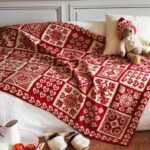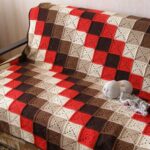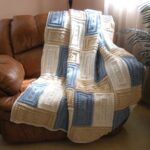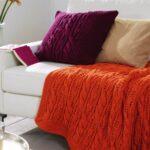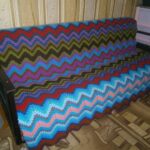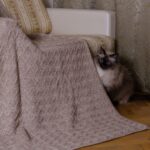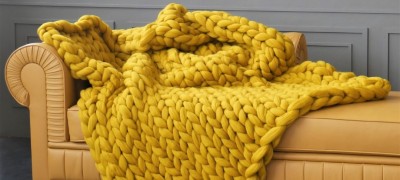DIY knitted blankets and bedspreads
When planning the interior of a bedroom, nursery or living room, special attention is paid to accessories that will help create an atmosphere of warmth and comfort. In particular, these can be blankets, pillows, tablecloths or napkins. That is why hand-made items are often preferred.
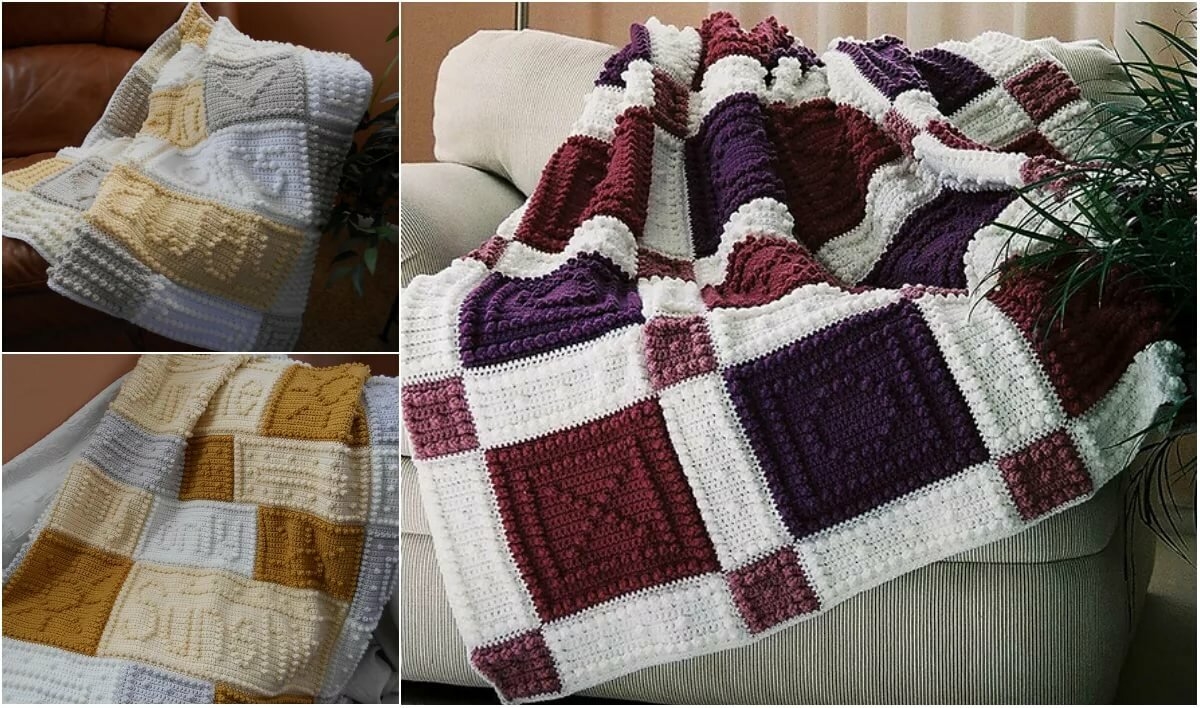
Peculiarities
Immediately, we note that a knitted blanket is a multifunctional product, and this can explain such close attention to it by a modern person. Everything is very simple: in our age of speed and total employment, it is so important to stop at least for a minute and plunge into the atmosphere of silence and comfort. Agree that, if not objects created by caring hands, will provide you with such relaxation?

The main feature of the product is that such a blanket or bedspread is a unique piece of furniture, which is a knitted fabric. The range of yarns today is large enough so that you can create a model that is ideal for you personally: hypoallergenic, correct in thickness and color scheme, with or without long pile.
Advantages of knitted blankets:
- They will bring completeness to the overall interior and add neatness and comfort to your bed (if you use such a bedspread in the bedroom).
- Will be a worthy temporary cover for upholstered furniture.
- In the summer, such a blanket-blanket can easily replace the classic blanket options.
- Knitted blankets for children can be used as walking envelopes, as well as a blanket when the baby is resting in the stroller.
- Openwork blankets have become a must-have accessory for leaving the hospital.
- Depending on the size, the baby blanket can be placed on the floor over the carpet, creating additional warmth on the playing field.
- In a cold room, knitted blankets do an excellent job of being a warm sweater or a cozy shawl. What could be more romantic and enjoyable than watching your favorite movie in your favorite armchair with a cup of aromatic coffee in a cloud of a warm blanket.
- If such a blanket is made of sheep or camel wool, then it generally has healing properties.
Hand-made blankets can have a wide variety of shapes, not just rectangular or square, like most factory models. It can be a circle, oval, six or octahedron. And the more non-trivial the form, the more interesting the design looks as a whole.

Any standard interior becomes exclusive and cozy if a knitted blanket appears in the room, because you cannot find it in every apartment.
Unfortunately, many are contraindicated for products knitted from natural woolen yarn, due to individual intolerance. But in this case, you just need to carefully consider the choice of the source material, and perhaps you will find a yarn that suits you personally. Moreover, the assortment is very diverse today.
Obviously, knitted blankets have more than enough advantages. But there are also disadvantages:
- Usually such things cannot be placed on the mattress to increase the level of softness, as the embossed pattern will leave “imprints” on the skin, and this negatively affects blood flow.
- If you knit yourself, then imagine that such a product will require a large amount of yarn and a lot of time.
- Caring for knitted products is problematic. It is difficult to wash by hand, and not everyone can "withstand" washing in the machine, finally, so that after drying the product will retain its previous shape, you will have to try. By the way, it is worth noting that the problem of washing is relevant both for crocheted bedspreads and models created with knitting needles.
- Drying requires a flat horizontal surface, and sometimes additional blocking of the product is required.
- Knitted blankets, however, like any other knitted things, quickly accumulate dust and become a breeding ground for dust mites (this explains the appearance of allergic reactions).
Varieties
Let's conditionally divide all knitted blankets into two categories:
- Knitted or crocheted by hand.
- Made with a knitting machine.
Usually machine knitting requires finer yarn, but the result is a product much faster than hand knitting. As a rule, machine products turn out to be perfectly flat, and very much resemble factory blankets. Manual work is not so perfect, even if it is performed by a master with many years of experience. And this is understandable. However, after washing, the hand-knitted blanket is noticeably flattened.

And yet, in the end, it is handwork that is valued more, since the result is always a unique thing of its kind that keeps the warmth of the hands of the craftswoman and a piece of her soul.
Knitting technique
There are four basic techniques for making a blanket by hand:
- Knit in a straight line from edge to edge.
- Knitting diagonally.
- Knitting in a circle.
- Knitting and connecting individual pieces.
Each of the above technologies is unique in itself, but before starting work, it is necessary to knit a pattern in order to determine the knitting density and calculate the required number of loops. In addition, make sure that you have a clear description of the pattern and a diagram.
Depending on the type of yarn and the size of the knitting needles (hook), the plaid will turn out to be large or small knitted.
A truly interesting design can be created in the following ways:
- Tunisian knitting.
- Afghan or stained glass knitting. Thanks to this technique, it is possible to beautifully combine two or more colors. Often, with the help of Afghan stained-glass windows, they create a large plaid from small fragments.
- Bavarian knitting is another way to create dramatic bedspreads (pillowcases). The product is crocheted in a circle, and new bright colors are gradually added in the process. Someone prefers to create one large canvas as a whole, while others like to combine small fragments more.
- Scandinavian motives. This is a jacquard knitting pattern typical for the Norwegian style: deer, snowflakes, stars. The product is made with garter stitch.
- Double-sided knitting. This technique involves knitting from two balls of different colors at once.

Style
The uniqueness of knitted blankets lies not only in their uniqueness, but also in the ability to harmoniously complement the interior in almost any style. Most often, knitted blankets are used in the following stylistic directions: country, provence, loft, African style, boho, baroque, avant-garde.
At the same time, the functional belonging of the room does not matter at all: a bedroom, a living room or a nursery. Moreover, a blanket in a strict, laconic design may well "settle" even in the office.

The size
The size of the blanket is randomly selected. More often it depends on the size of the bed (sofa) on which it will be located. Also, the “owner” of a cozy little thing plays a role: children's bedspreads, as a rule, have a size of 70x70, 80x100, 100x100, 110x140 cm.
If you knit yourself, then you are familiar with the situation when a blanket of remnants is knitted until these very remnants run out.
And standard adult blankets can be up to 180x200 cm.
And yet it is worth noting that very voluminous blankets, although they look impressive, are most often inconvenient to use. And this fact must be taken into account when choosing a model and size.
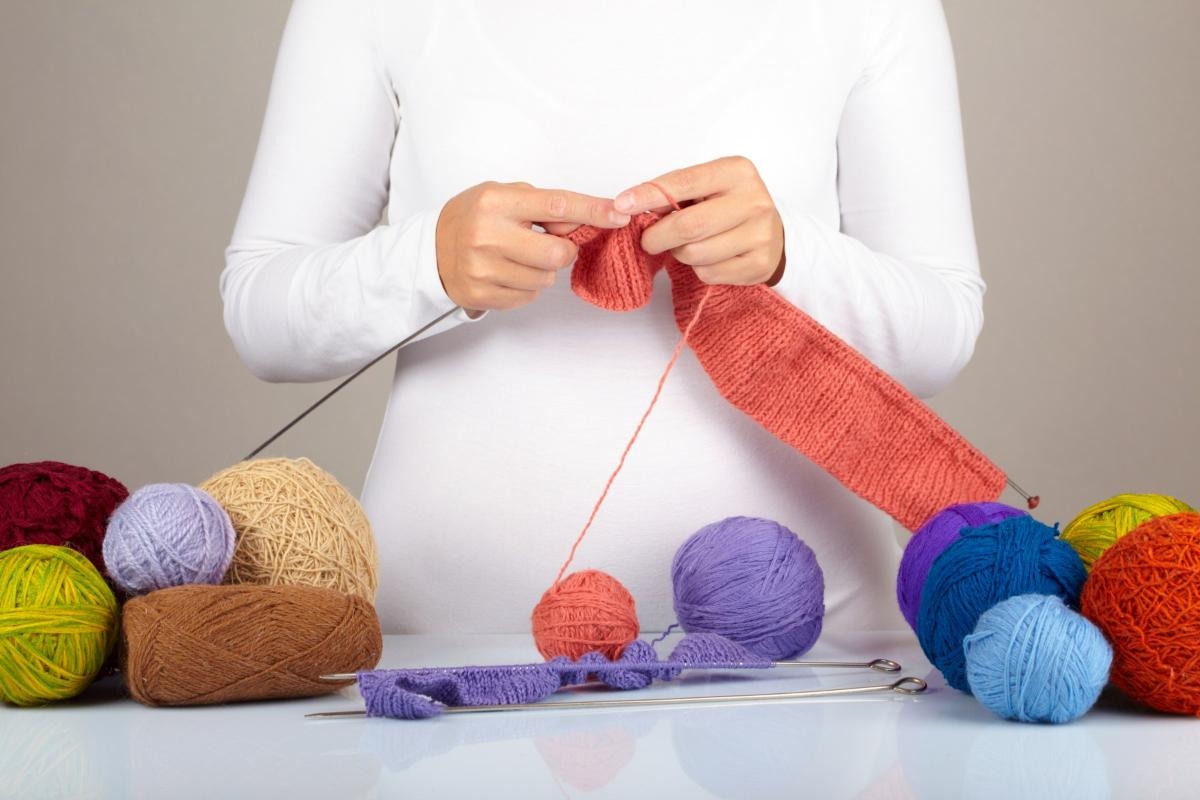
Color and decor
The color palette of knitted bedspreads is very versatile. Manufacturers actively offer the so-called non-marking range: burgundy, brown, blue, dark gray. Undoubtedly, such models do not need frequent washing and fit quite harmoniously into different interior solutions. For bedrooms, pastel colors are more preferable: beige, peach, pale pink, milky. Popular colors are mint, lilac and lemon.
For decoration of nurseries, bedspreads with drawings and ornaments of bright "cheerful" shades are more suitable. Very often, baby blankets are made from colored fragments. Such knitted bedspreads fill the child's room with positive and serve as a source of energy.

If we talk about additional decorative design of knitted bedspreads, then it can be very diverse: from classic tassels and pompons, to lace trim, ruffles, as well as beads or sequins. Most importantly, remember that the decor should not interfere, and even more so be dangerous (the latter is more important for children's blankets, when the child can taste any additional element).

How to knit a blanket
So how to knit a plaid? To begin with, we note that the blanket, along with scarves and stoles, is one of the easiest knitted ideas to embody. You do not need a pattern, and even if the result is a little larger or smaller, this is not critical. This means that a knitted or crocheted bedspread for adults is a great idea for beginner knitters.

Another argument in favor of knitting blankets is the ability to embody any patterns and techniques. You can only knit with knitting needles - knit the model with knitting needles. If you want to master the technique of Tunisian knitting - feel free to get down to business. And if you prefer knitting from individual motifs, and besides, a sufficient amount of multi-colored yarn has accumulated - feel free to act, taking as a basis the simplest pattern, for example, "grandmother's square".
So, to create your own knitted miracle, you will need:
- Yarn.
- Hook or knitting needles of the correct size.
- Scheme (on paper or video master class).
- Scissors and, of course, inspiration.
To begin with, it is better to knit the pattern, especially if you are going to knit the product with a whole canvas. This is necessary to determine the initial number of loops. Then cast on the required number of loops and get to work.
A plaid of separate motives is an even simpler story.In the process, you can slightly adjust the number of fragments, based on the size you need, as well as on the amount of yarn available.

Pay attention to the tightness of the knitting. A denser knit blanket will turn out to be practical and convenient to use, while a loose knit is unlikely to withstand at least one wash. Therefore, carefully consider the selection of the hook and knitting needles.

If you are new to this type of handicraft, you should not immediately tackle a large product. Tie a blanket or a blanket for a newborn first.
A few simple guidelines
If you are purchasing a factory knitted blanket, consider the following:
- Be sure to ask for a quality certificate.
- The product must contain information about the materials used, the rules of care, as well as information about the manufacturer.
- Pay attention to the heat level indicator.
- If possible, read the reviews for this product, and read the responses about the manufacturer.
- Check the seller's warranty for this product.
- Correlate the given price and quality. Do not buy the first blanket that comes across, get acquainted with the products of other manufacturers, do market monitoring.

A knitted blanket is a great way to make a room cozy. And having created such a product with your own hands, you can be completely sure of the uniqueness of your own interior. And believe me, no matter how experienced you are, hand-made products can fill any room with a special atmosphere.
Video: how to create a do-it-yourself sofa cover




